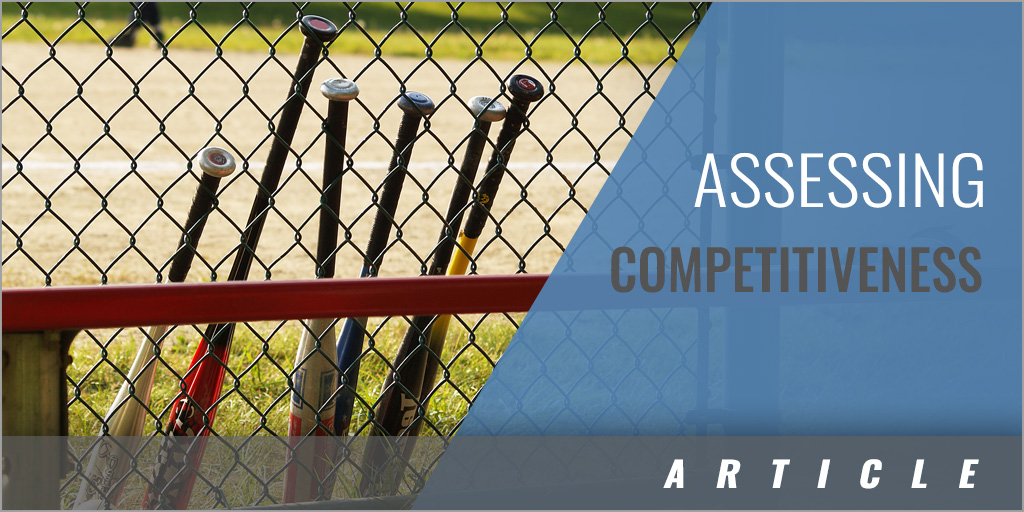|
By: Lisa (Sweeney) Van Ackeren Originally Published in: Practice Perfect Softball - NFCA Provided by: Human Kinetics To build a competitive environment, the first step is to understand the current team culture. Here are a few questions to consider: What motivates this group of athletes? What three to five words most accurately describe this team? When presented with a challenge, how do they respond? What are our values as a team? This exercise can start among the coaches, but I encourage you to engage in a wider conversation with your student-athletes. Here is an example of how to engage the team in a culture-based conversation:
The team often sees things a little differently than we as coaches do, and when it comes to culture, they are the primary creators, participants, and influencers of it. After getting a handle on the unique culture of your team, a good next step is to evaluate all the environments that athletes are training in from the ground up. This list can include strength, conditioning, and agility sessions; individual lessons or workouts; small-group workouts; team practices; and games. To do this, I break the concept of competition up into two larger subtopics: competition within the team (athlete versus self, athlete versus teammates, and team versus practice) and outside competition (team versus the other guys). Athlete Versus Self Developing a competitive mind-set has to start within the athlete herself. One of the best ways to promote an athlete's competitive drive and her skill development is to set specific, tangible goals. At the close of our fall season, we meet with our student-athletes individually to set goals for our offseason Example 1 Describe in detail your goals for spring season in the following areas:
Example 2 List your outcome goals (long-term goals, specific things about the type of athlete you want to become for spring season). List your process goals attached to each of your outcome goals (What do you have to do along the way to get the results, or outcome goals, you want?). It's March 27, and we are set to play our first Ivy League doubleheader:
These two examples demonstrate an introductory way to help student-athletes foster inner competitiveness by measuring themselves against a goal. Even when no one else is around, student-athletes have tangible, attainable goals to focus their workouts and breed a desire to complete their goals. Notice that the two examples are quite different. The first represents a year when the team needed an in-depth discussion about leadership and team culture. With a small group of upperclassmen, including only two seniors, the rest of the team needed to step up to fill leadership roles and contribute positively to the team culture we set out to create. The second example is much more specific about individual skill development and goals, encouraging team members to take ownership over the work they put in during the offseason. These individual meetings can be adapted to cover the topics relevant to your team that particular year. Athlete Versus Teammates Another aspect of building competitiveness within a team is to create situations in which student-athletes are being challenged by their teammates. Some of the biggest jumps I have witnessed in the development and growth of a student-athlete occurred when our coaching staff made intentional, motivating partnerships in non-position-specific training. For example, a sophomore in our program showed great potential and a decent work ethic early in her college career. She was matched up as a lifting partner with a senior who was modest but unapologetic about the effort she put in to every workout. This senior brought a blue-collar attitude to everything she did; she was the first person to arrive and the last to leave, shirt drenched after every session, the epitome of a leader by example. This senior helped unleash an inner fire in our sophomore, and the rest of the team noticed that both were improving weekly in the weight room because of their special partnership. This kind of quiet, encouraging competitiveness between teammates can be realized on any team by being deliberate about the partnerships that coaches create outside positional training. Competing for positions, on the other hand, creates situations in which student-athletes are grouped with teammates that they often don't have a choice to be grouped with. If you are a pitcher, you're working out with other pitchers. If you are a catcher, you are competing with the other catchers on the team for that starting spot. Friendship and personality similarity or differences often take a backseat in these relationships, and they should. Regardless of the relationship of the athletes in a particular position group, we can find a way to create a positive, productive, and competitive environment in which they can all improve. I believe that to establish competitive position training at practice, the coaching staff must first communicate clear expectations for playing time to the team. If an athlete thinks that she will never have a chance to see the field no matter how hard she works or what improvements she makes, her competitive spirit diminishes and the entire position group suffers. Outlining expectations for each athlete and the steps she needs to take to contribute to the team's success allows the coaching staff to hold her to that standard and allows the athletes in the position group to evaluate themselves in an accurate, realistic way. |







